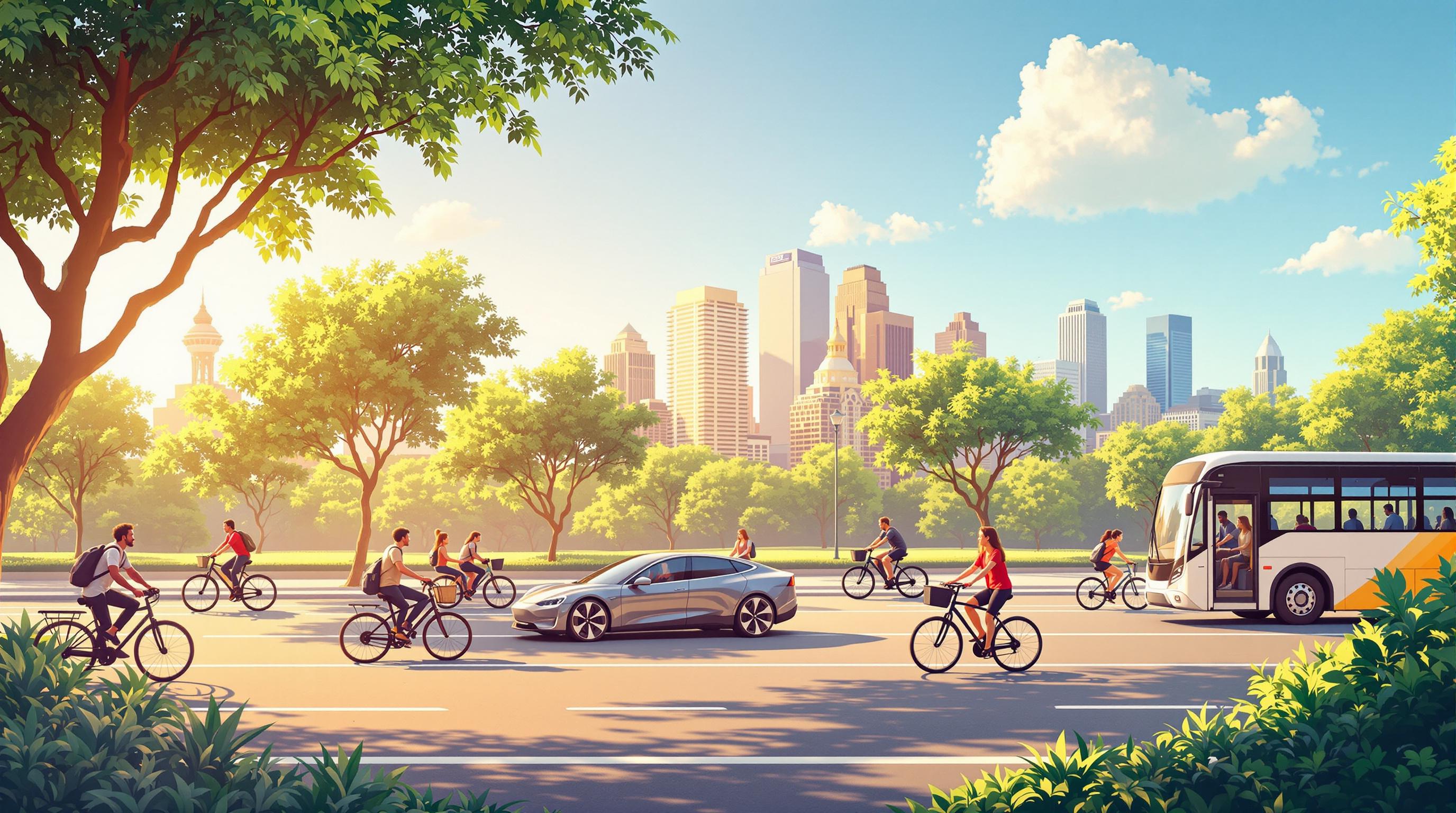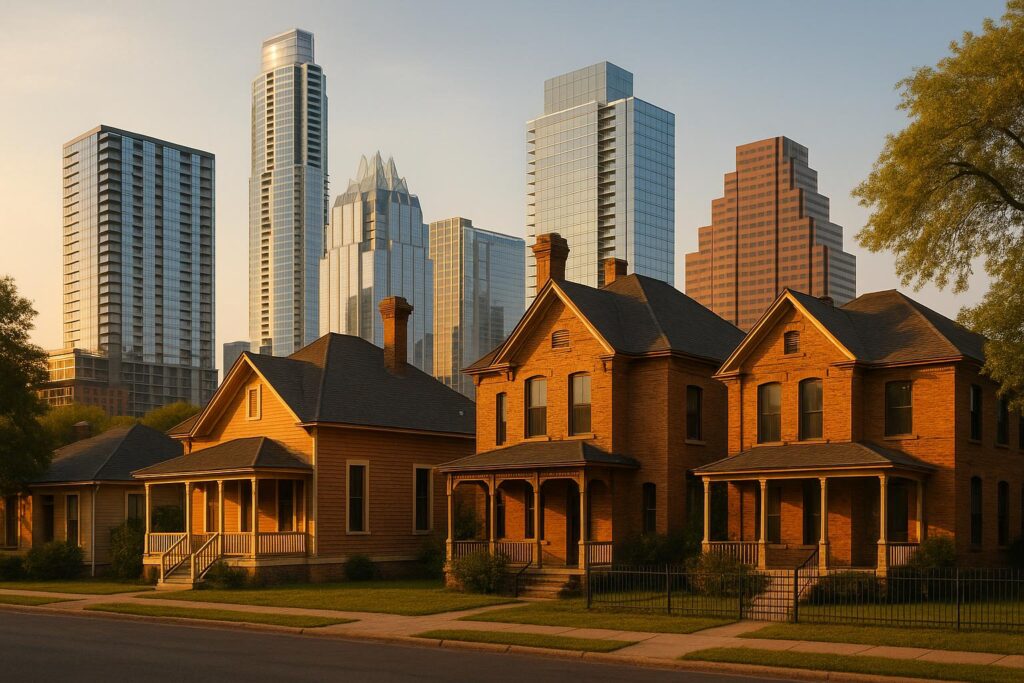- Shortest Commutes: Rollingwood (4 miles, 15–25 mins during rush hour) and Westlake (6 miles, 25–35 mins) offer the fastest drives to downtown.
- Longest Commutes: Lakeway (20 miles, 45–60 mins) and Bee Cave (16 miles, 40–50 mins) face heavier traffic and longer travel times.
- Routes Matter: Key roads like MoPac Expressway (Loop 1), Highway 360, and Highway 71 significantly impact commute times.
- Peak vs. Off-Peak: Travel times can double during rush hours (7:00–9:00 AM). Off-peak drives are much faster across all neighborhoods.
- Tips for Commuters: Avoid peak hours, monitor live traffic updates, and explore alternate routes to save time.
Quick Comparison Table
| Neighborhood | Distance to Downtown | Peak Morning Commute (7–9 AM) | Off-Peak Commute |
|---|---|---|---|
| Lakeway | 20 miles | 45–60 minutes | 25–30 minutes |
| Bee Cave | 16 miles | 40–50 minutes | 20–25 minutes |
| Westlake | 6 miles | 25–35 minutes | 12–15 minutes |
| Rollingwood | 4 miles | 15–25 minutes | 8–10 minutes |
Summary
West Austin’s commute times vary significantly by neighborhood. Closer areas like Rollingwood and Westlake offer shorter, more predictable drives, while farther neighborhoods like Lakeway and Bee Cave face longer, less reliable commutes. Plan your route and timing wisely to minimize delays.
Think Twice About Bee Cave Texas If These Are Your …
1. Lakeway to Downtown
Drivers in Lakeway have several options to reach downtown. The main route is RM 620 heading south to MoPac, which typically offers smooth travel when traffic is light. If MoPac is congested, many opt for RM 620 combined with Highway 360. Another alternative is taking Hamilton Pool Road to Highway 71.
Morning rush hour can be particularly challenging, with heavy traffic building up at RM 620 intersections and highway junctions. To save time, commuters often leave earlier and rely on live traffic updates to avoid delays caused by accidents or construction.
2. Bee Cave to Downtown
Traveling from Bee Cave to downtown Austin offers two main routes: Highway 71 (Bee Cave Road) and Southwest Parkway. Each has its perks, depending on the time of day and traffic flow. Here’s a closer look at what to expect with each option.
Highway 71 connects directly to MoPac Expressway, making it a go-to choice during off-peak hours. Commute times in the early morning range from 25 to 35 minutes, but during rush hour, they can stretch to 45 to 60 minutes. The busiest spots are the Highway 71/MoPac interchange and the area near the local mall.
Southwest Parkway offers a solid alternative, often avoiding the worst traffic zones. Early morning travel on this route takes about 30 to 40 minutes, while peak-hour times are around 40 to 50 minutes. Its biggest advantage? Travel times are generally more consistent, with fewer unexpected backups.
| Route Option | Off-Peak Time | Peak Time (7:30–9:00 AM) | Common Congestion Points |
|---|---|---|---|
| Highway 71 | 25–35 mins | 45–60 mins | MoPac interchange, local mall area |
| Southwest Parkway | 30–40 mins | 40–50 mins | Minimal major congestion |
Seasonal changes, construction (especially near Hill Country Galleria), and weather can add 10 to 15 minutes to your commute. Using traffic apps and avoiding peak hours can make your drive smoother.
The intersection of Highway 71 and Bee Cave Parkway is a critical decision point. Choosing the right route based on real-time conditions can save you time and stress.
sbb-itb-4c99469
3. Westlake to Downtown
Westlake residents have two primary options for reaching downtown Austin: MoPac Expressway (Loop 1) and Capital of Texas Highway (Loop 360). Travel times depend on the route and time of day.
The MoPac Expressway offers the most direct path. While it’s usually smooth during off-peak hours, rush hour often brings significant delays. Toll lanes can help ease traffic during these busier times.
The Capital of Texas Highway (Loop 360) provides another option, connecting to downtown through major roads like MoPac or Cesar Chavez Street. However, traffic tends to be heavier during peak hours, with delays common at key congestion points. These differences highlight key factors for comparing neighborhoods in the next section.
4. Rollingwood to Downtown
Rollingwood residents benefit from a quick commute to downtown Austin, primarily via the MoPac Expressway (Loop 1), which provides direct access to the city. Travel is usually smoother during off-peak hours, though rush hour can lead to longer drive times. When traffic builds up, alternative routes come in handy.
Some popular options include taking Bee Caves Road to Lake Austin Boulevard and then onto Cesar Chavez Street, or using Barton Springs Road via Rollingwood Drive for a more local route. Red Bud Trail is another reliable backup when the main routes are congested.
For those who prefer cycling, the Johnson Creek Trail connects to the Lady Bird Lake Trail, offering a way to bypass vehicle traffic. While biking may take longer than driving during quieter times, it’s a favored option for avoiding rush-hour headaches.
These flexible commuting options make Rollingwood an attractive choice for professionals heading downtown, providing convenient access compared to many other neighborhoods in West Austin.
Commute Comparison by Neighborhood
This section takes a closer look at how commute experiences differ across neighborhoods in West Austin.
Commute times and traffic conditions vary widely depending on the neighborhood. Areas closer to downtown, like Rollingwood and Westlake, tend to have shorter and more consistent travel times. In contrast, neighborhoods farther out, such as Lakeway and Bee Cave, often deal with longer drives and more unpredictable traffic. The proximity to downtown not only shortens commutes but also impacts how traffic congestion builds up.
Traffic patterns differ significantly. Central neighborhoods usually experience steady traffic with delays that are easier to anticipate. On the other hand, outer areas are more prone to sudden congestion caused by bottlenecks along key routes. Residents near downtown also have the advantage of multiple alternate routes to bypass delays, while those in outer neighborhoods see only minor benefits when trying to avoid main roads.
The farther a neighborhood is from downtown, the less reliable commutes become during peak hours. This makes location an important consideration for planning daily travel.
Summary and Recommendations
Rollingwood and Westlake stand out for their faster commutes to downtown compared to Bee Cave and Lakeway. Their closer location to the city center means more consistent travel times and several route options.
Here are some tips to consider:
- Plan your schedule to dodge peak traffic hours: Timing can make a big difference in your daily commute.
- Explore alternative routes: Having backup options can save time when traffic builds up.
- Keep an eye on local infrastructure updates: Roadwork or new developments can impact your travel time.
For more personalized advice, reach out to real estate professionals like Austin Local Team (https://localteam.ai). They can provide insights on traffic trends and help you find properties that align with your commuting and lifestyle preferences.





